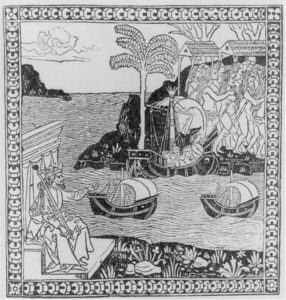Spanish Empire Personality Type
Colonial empire governed by Spain between 1492 and 1976
The Spanish Empire (Spanish: Imperio español), also known as the Hispanic Monarchy (Spanish: Monarquía Hispánica) or the Catholic Monarchy (Spanish: Monarquía Católica) was a colonial empire governed by Spain and its predecessor states between 1492 and 1976. One of the largest empires in history, it was, in conjunction with the Portuguese, the first to usher the European Age of Discovery and achieve a global scale, controlling vast portions of the Americas, territories in Western Europe, Africa, and various islands in Oceania and the Pacific. It was one of the most powerful empires of the early modern period, becoming known as "the empire on which the sun never sets", and reached its maximum extent in the 18th century.An important element in the formation of Spain's empire was the dynastic union between Isabella I of Castile and Ferdinand II of Aragon in 1469, known as the Catholic Monarchs, which initiated political, religious and social cohesion but not political unification. Castile became the dominant kingdom in Iberia because of its jurisdiction over the overseas empire in the Americas. The structure of the empire was further defined under the Spanish Habsburgs (1516–1700), and under the Spanish Bourbon monarchs, the empire was brought under greater crown control and increased its revenues from the Indies. The crown's authority in the Indies was enlarged by the papal grant of powers of patronage, giving it power in the religious sphere.After the Spanish victory at the War of the Portuguese Succession, Philip II of Spain obtained the Portuguese crown in 1581, and Portugal and its overseas territories came under his rule with the so-called Iberian Union, considered by many historians as a Spanish conquest. Phillip respected a certain degree of autonomy in its Iberian territories and, together with the other peninsular councils, established the Council of Portugal, which oversaw Portugal and its empire and "preserv[ed] its own laws, institutions, and monetary system, and united only in sharing a common sovereign." The forced union remained in place until 1640, when Portugal re-established its independence under the House of Braganza. Iberian kingdoms retained their political identities, with particular administration and juridical configurations. Although the power of the Spanish sovereign as monarch varied from one territory to another, the monarch acted as such in a unitary manner over all the ruler's territories through a system of councils: the unity did not mean uniformity.The Treaty of Cateau-Cambresis (1559) confirmed the inheritance of Philip II in Italy (the Mezzogiorno and the Duchy of Milan). Spain's claims to Naples and Sicily in southern Italy dated back to the Aragonese presence in the 15th century. Following the peace reached in 1559, there would be no Neapolitan revolts against Spanish rule until 1647. The Duchy of Milan formally remained part of the Holy Roman Empire but the title of Duke of Milan was given to the King of Spain. The death of the Ottoman emperor Suleiman the Magnificent in 1566 and the naval victory over the Ottoman Empire at the Battle of Lepanto in 1571 gave Spain a claim to be the greatest power not just in Europe but also in the world.

